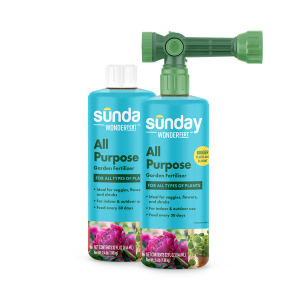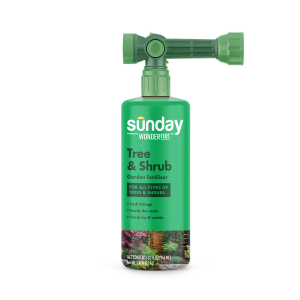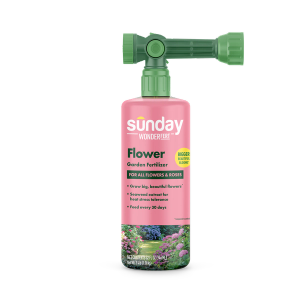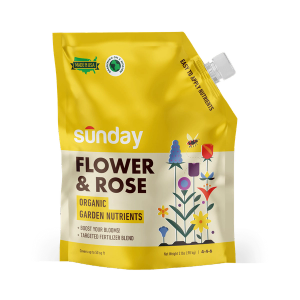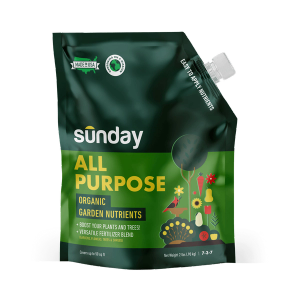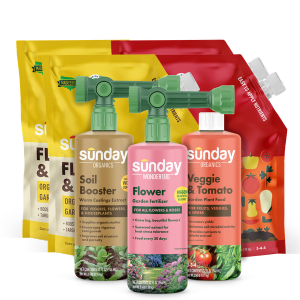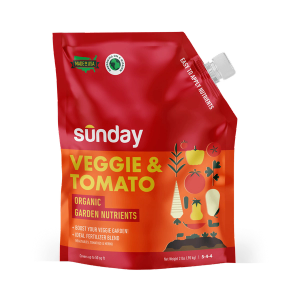Where does walnut toxicity occur
Juglone is present in all walnut tree parts, but concentrations are highest under the canopy of the walnut tree, directly underneath the branches and leaves. This is where debris is more likely to fall, decompose, and release juglone into the soil. Keep in mind that tree roots may extend beyond the canopy and release juglone outside this canopy as well.
Symptoms of walnut toxicity
Plants sensitive to juglone will typically turn yellow, wilt, and in severe cases, die. Often these symptoms look similar to drought stress, but they usually progress more rapidly, and will occur even if you’re watering your garden plants properly.
Sunday Tip:
Decaying tree roots and stumps can still secrete juglone over time as they break down, so cutting down a walnut tree may help but may not fully solve the issue.
What will grow under black walnut?
Juglone doesn’t affect all plants - there are many plants that can typically be safely planted near walnut trees without harm.
- Grasses and lawn plants: turfgrasses and white clover
- Fruits and vegetables: beans, beets, black raspberry, carrots, cherry, corn, melons, onions, parsnips and squash
- Ornamental trees and shrubs: arborvitae, black locust, catalpa, elm, forsythia, hawthorn, hemlock, hickory, Japanese maple, junipers, most maples, oak, pawpaw, persimmon, redbud, red cedar, sycamore, most viburnum, wild rose
- Flowers and herbaceous plants: astilbe, bee balm, begonia, bellflower, bloodroot, bugleweed, calendula, coral bells, cranesbill, crocus, daylily, ferns, grape hyacinth, hollyhock, most hostas, hyacinth, Jack-in-the pulpit, Jacob’s ladder, lamb’s ear, lungwort, morning glory, pansy, phlox, Shasta daisy, Solomon’s-seal, spiderwort, spring beauty, Spanish bluebell, Virginia bluebell, stonecrop, sweet Cicely, sweet woodruff, trillium, tulip, violet, wild ginger, zinnia
What not to plant near walnut trees
- Some plants are more sensitive to juglone and should not be planted near walnut trees
- Fruits and vegetables: apple, asparagus, blackberry, blueberry, cabbage, eggplant, pear, pepper, potato, rhubarb, and tomato
- Ornamental trees and shrubs: azalea, crabapple, hydrangea, lespedeza, lilac, mountain laurel, ornamental cherries, pear, most pines, potentilla, privet, red chokeberry, saucer magnolia, silver maple, spruce, white birch, yew
- Flowers and herbaceous plants: autumn crocus, blue wild indigo, chrysanthemum, columbine, hydrangea, lily, narcissus, most peonies, petunia
Other options for avoiding walnut toxicity
Even if you have plants that are sensitive to juglone, there are a few steps you can take to help protect them from walnut toxicity. Locate garden beds as far away from walnut trees as possible, and incorporate organic matter into the soil under walnut trees, to improve drainage and reduce severity of juglone toxicity. Remove fallen walnut tree debris like leaves and twigs and do not use walnut wood for mulch in garden beds to prevent these planty bits from decomposing and releasing juglone. If you’re wanting to be extra-cautious, plant in raised beds or containers to avoid the underlying juglone-y soil.
Cited sources
Black Walnut Toxicity. Purdue University Cooperative Extension Service.
Black Walnut Toxicity. Wisconsin Horticulture Division of Extension.
Landscaping and Gardening Around Walnuts and Other Juglone Producing Plants. PennState Extension.







